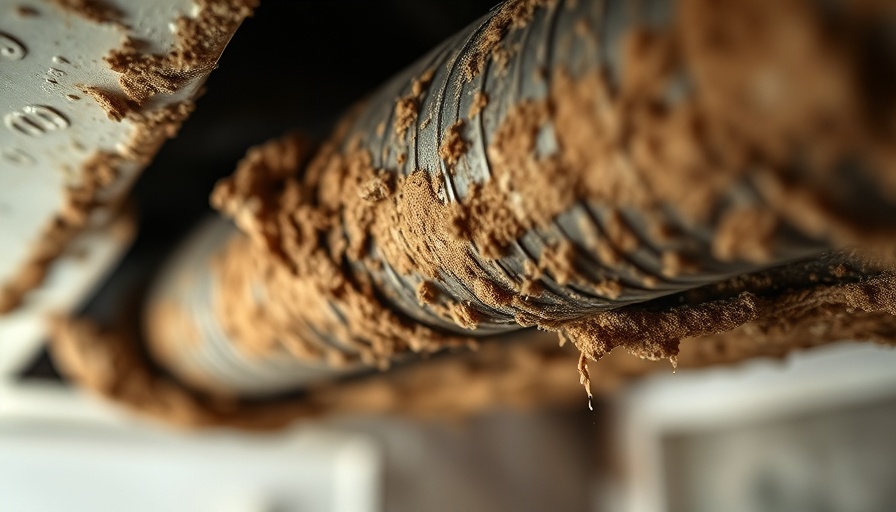
Understanding Mold in Your Air Ducts: Why It Matters
Homeowners often overlook the air ducts running through their HVAC systems, but these conduits can become prime real estate for mold growth. Mold in your air ducts doesn’t just lead to unpleasant odors; it can also introduce a host of health risks. Symptoms like sneezing, coughing, and headaches can arise from prolonged exposure, particularly for sensitive individuals such as those with allergies or asthma. In fact, the U.S. Environmental Protection Agency warns that any visible mold, or unexplained health issues, could be linked to problematic air quality within the home. With the HVAC system circulating air throughout the dwelling, any spores that find their way into your air ducts can quickly spread, exacerbating health issues and making it essential to address the root of the problem quickly.
Where Does Mold Typically Grow in HVAC Systems?
Mold thrives in moist, dark environments, making HVAC systems particularly vulnerable. Key locations include:
- Air Ducts: Poor insulation or sealing can create conditions ripe for condensation, facilitating mold growth.
- Evaporator Coils: These can also become moldy if condensation is not properly managed, causing a reduction in airflow.
- Drain Pans: Often overlooked, clogged drain pans are a significant source of stagnant water, leading to mold proliferation.
Regular maintenance is crucial; the last thing you want is a small, manageable problem spiraling into a full-fledged infestation.
Detecting Mold: Signs You Shouldn't Ignore
Recognizing the signs of mold can be tricky, but paying attention to specific indicators can help you catch the issue early:
- Odors: A persistent musty smell when your HVAC system runs often signals mold lurking within.
- Visual Clues: Dark spots or discoloration in your ducts could indicate mold growth and warrant further investigation.
- Health Symptoms: If respiratory problems or allergy-like symptoms worsen when the HVAC system operates, consider this a strong sign.
Not all mold can be easily seen, so if you sense something's wrong, consider bringing in a professional to conduct a thorough inspection.
Taking Action: Strategies for Mold Removal
Once mold is detected, acting swiftly is vital. Here’s how you can approach removing it:
- DIY for Small Areas: If the mold covers less than 10 square feet, you can potentially manage the removal yourself using soap and water or diluted bleach.
- Professional Help for Larger Issues: For larger infestations, bringing in experts ensures safety and effectiveness. Trying to DIY larger areas can lead to more issues if not done correctly.
- Preventive Maintenance: Regular cleaning, inspecting for leaks, and changing air filters every few months are critical to preventing mold’s return.
The cost of hiring professionals typically ranges from $1,125 to $3,439, making it a worthwhile investment for your health and home.
Proactive Tips to Keep Your HVAC Mold-Free
Preventing mold is significantly easier than removing it, and proactive measures can keep your air quality safe:
- Monitor Humidity Levels: Aim to keep indoor humidity between 30% and 50%. Using dehumidifiers can help achieve this.
- Regular System Inspections: Ensure your HVAC system is serviced annually to catch any potential problems early.
- Control Moisture: Fix any leaks promptly, and make sure your gutters function correctly to keep water away from your home.
Through these steps and a little vigilance, homeowners can protect both their health and home from the potential perils of mold in the air ducts.
By staying informed and proactive, you can create a safer and cleaner living space for you and your loved ones. Don't wait until the problem escalates; take charge of your indoor air quality today!
 Add Row
Add Row  Add
Add 




 Add Row
Add Row  Add
Add 

Write A Comment